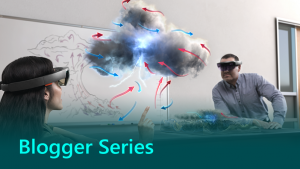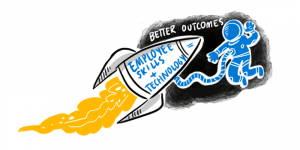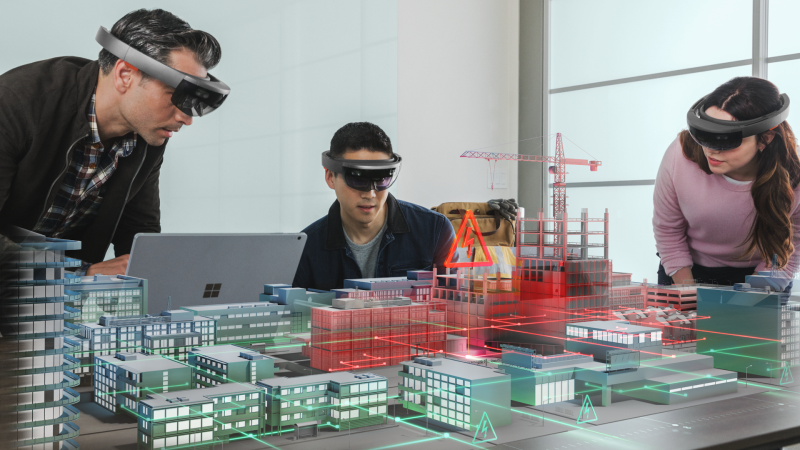
The top technology trends for business in 2019
We all know resolutions can be hard to stick to (especially if, like me, you’ve decided to go the low-calorie route through the depths of winter). So, wipe those fuzzy memories of triumphantly shouting “2019 will be the year of the gym!” at approximately 11:54pm on New Year’s Eve and focus on something that’s not only a lot more interesting, but will change your life, organisations, and potentially the world.
We’re in the midst of the fourth industrial revolution and the pace of change is faster than it’s ever been – years are now flying by and you don’t want to get lost in the past. That’s right, we’re looking at the technology trends that have the potential to empower your employees, engage your customers, and transform the world in 2019. Instead of focussing on new year, new you; try new year, new us.
Here we take a look at the top technology trends for 2019, and how you can leverage them to improve your business.
1. Real-time AI at the blink of an eye
Ok, before you finish your eye roll – we know AI has appeared in these lists for a few years already and for very good reason. This year, it’s only going to get more popular, bigger, and faster.
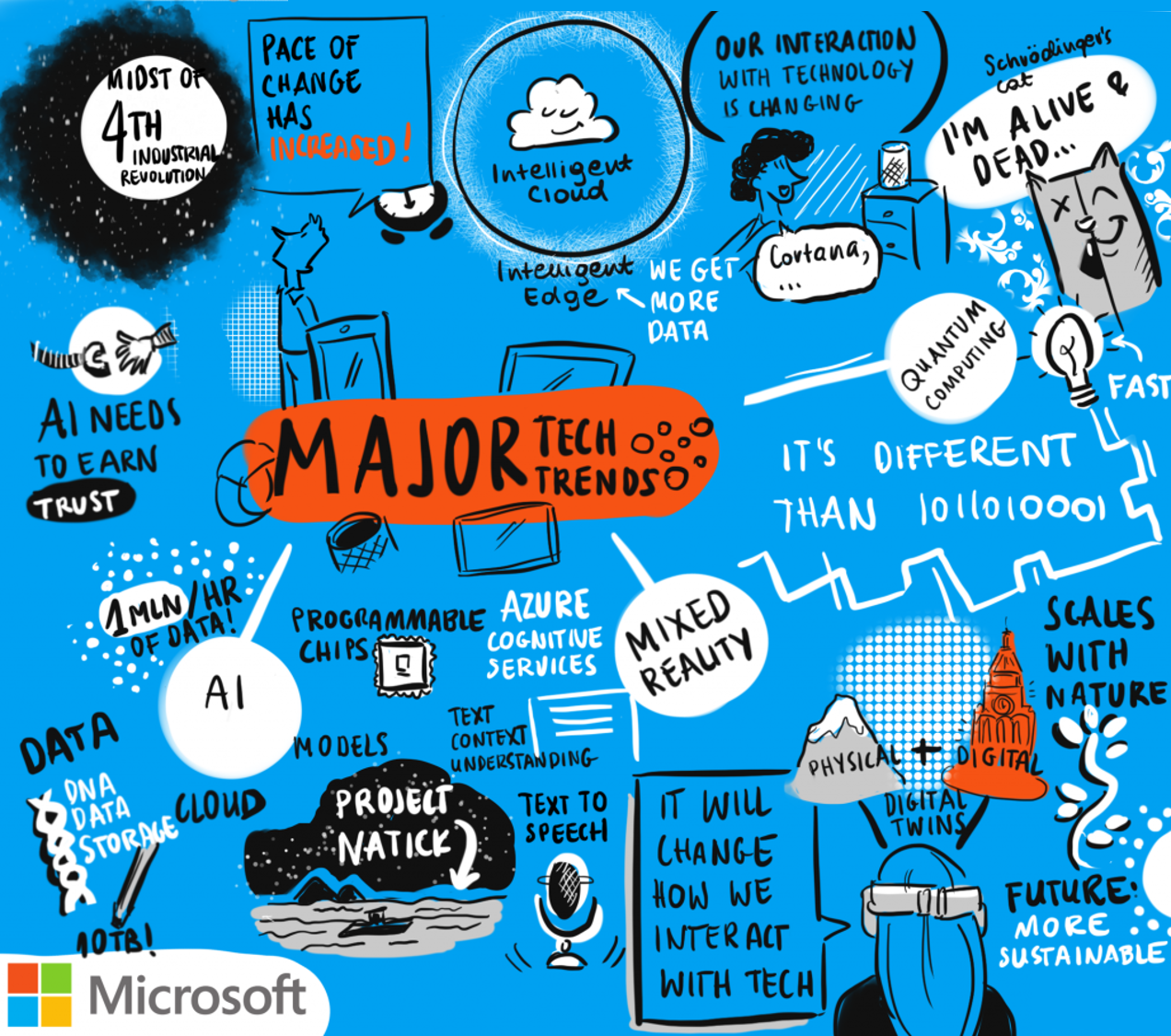 2019 will be the year where we see organisations shifting from just thinking about AI to being proudly AI-first. It will stretch right to the edge – a continuously expanding set of data-gathering connected systems and devices. It will give real time insights and experiences which means your organisation will be faster, more responsive and more creative.
2019 will be the year where we see organisations shifting from just thinking about AI to being proudly AI-first. It will stretch right to the edge – a continuously expanding set of data-gathering connected systems and devices. It will give real time insights and experiences which means your organisation will be faster, more responsive and more creative.
Real-time AI is becoming more and more important as cloud infrastructures process live data streams such as search queries, videos, or interactions with users.
Project Brainwave is a future-proof deep learning platform that provides real-time AI, fast. Deep neural networks use large multi-layered models which are deployed in the world’s largest configurable cloud. It has up to 39.5 teraflops of effective performance. Which means it’s fast. Very fast.
How can you use real-time AI?
When using image classification, for example, Project Brainwave can process an image in under 2 milliseconds. That means you’ll be able to detect spills in your retail stores immediately, inspect critical equipment, or track items across supply chains. Or perhaps you can give your healthcare practitioners more time with their patients by using it to conduct real-time medical image analysis.
Soon there will be models for text, audio, speech, and natural language and you’ll be able to accelerate your own custom models.
Not only is your real-time AI high speed and low cost, but by using programmable hardware, it means it’s completely future-proof and able to adapt to whatever we’ll encounter in 2020’s top tech trends.
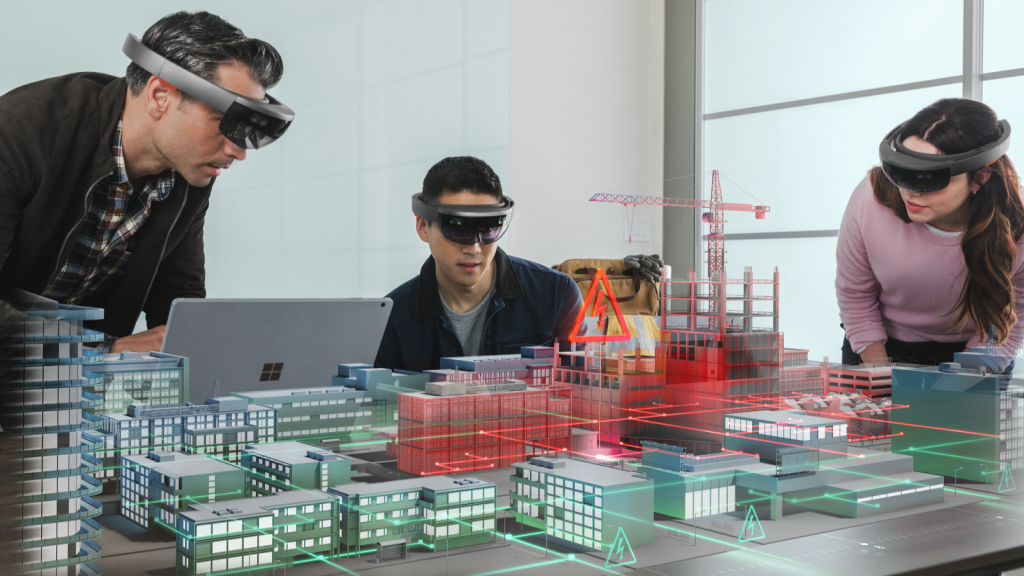
2. Mixing business with mixed reality
Mixed reality is not just for gaming. It’s slowly found a niche in businesses and is changing how we interact with technology.
It brings the best of the digital and physical worlds together, providing context-relevant information as it’s needed.
What we’ll see in 2019 is not only an increasing use of this in business, but drawing in real-time AI and the use of digital twins.
A digital twin is exactly what it sounds like – a virtual copy of a physical space, such as a building, factory, city, or even a tube system. Using real-time AI to gather data from the real space such as its devices, systems and the way it’s being used, it creates a digital twin.
For example, a digital twin of a factory identifies a piece of machinery may need repairing soon. Using the digital twin, an engineer can open the virtual version and troubleshoot the problem. This can then be loaded into the system and a frontline worker can be guided to fix the machine onsite using the HoloLens to see the virtual model next to the real one.
With your digital twin you’ll be able to detect problems, track patterns, gain new insights, and fix issues before they arise in the real world, making your business more productive.
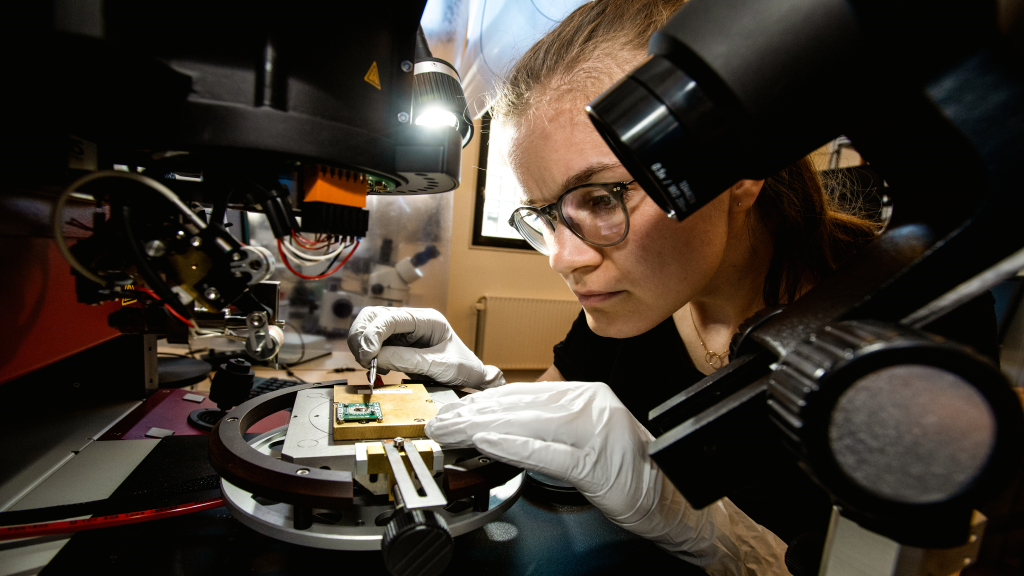
3. Smarter than Deep Thought
Quantum computing is basically touted as the Superman of computing. It will be able to solve huge problems that classical computing couldn’t, quickly. And because it can do that, it could change the world.
Normal computers use bits – or ones and zeros – and processes them one string at a time. Quantum computing stores information in qubits which can be both ones and zeros at the same time. By existing in both states, quantum computers can process all strings at the same time.
This is revolutionary because we’ll be able to develop new materials, improve medicines, accelerate AI, bridge new frontiers in cryptography, and find the answer to life, the universe, and everything in it (and even tell you the question, too).
Microsoft is working on a scalable solution with a robust qubit called the topological qubit. These have higher accuracy, are more stable, and low cost.
For organisations, that means you may soon be using quantum computers to answer your business problems, improve infrastructure, reduce costs, and help provide fast insights into data.
For the world, quantum computers could solve world hunger, help us reduce carbon emissions, and understand and change the very building blocks of the universe. And if that isn’t going to completely change and empower us all, I don’t know what will. Who knows, it might even encourage you to stick with the gym.
Watch the video: Future technology trends explained
Hear from Microsoft UK’s Chief Technology Officer, Michael Wignall, around some of the top technology trends that will transform the future of work to understand what they could mean for your business.

